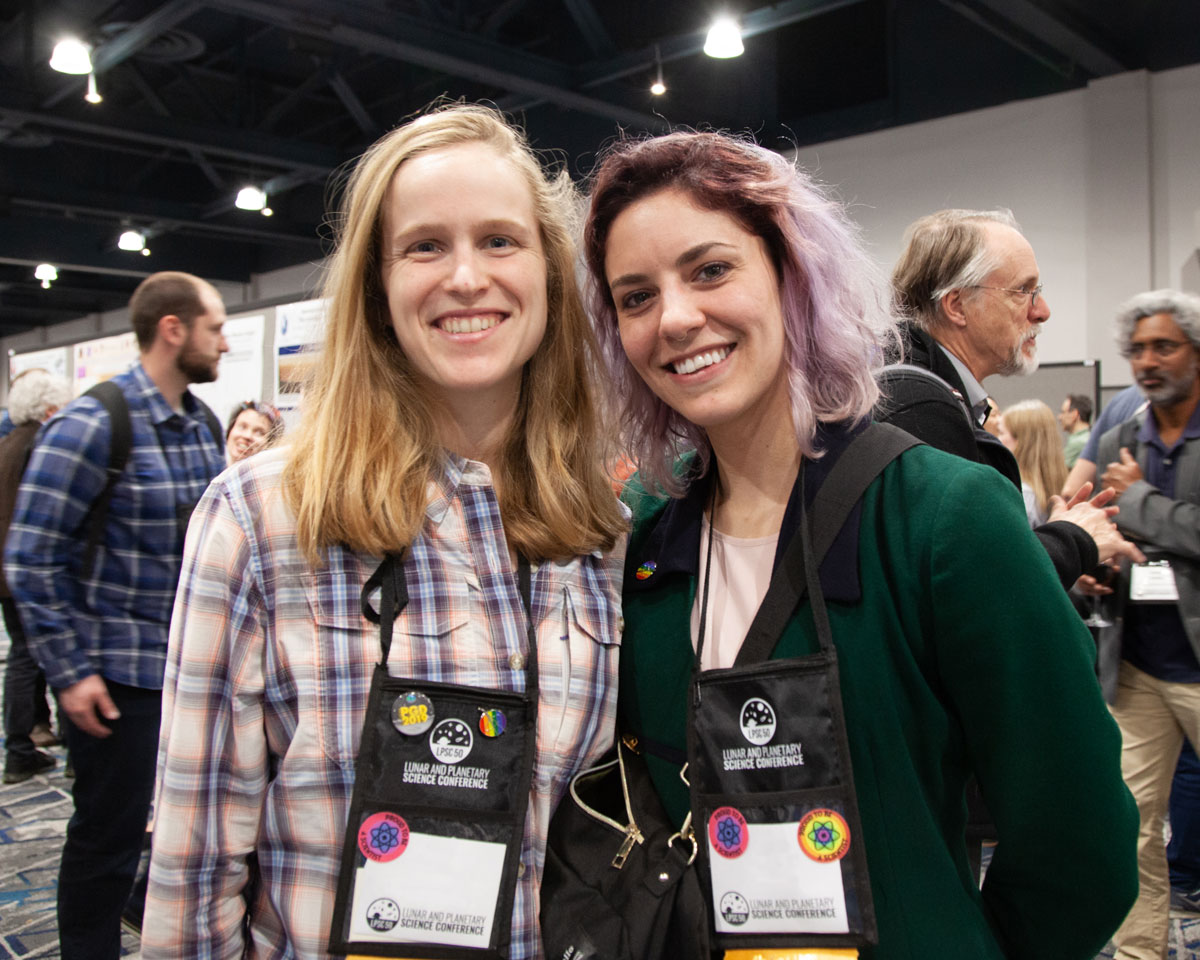Welcome Message from Conference Co‐Chairs
Watch Now
The 52nd Lunar and Planetary Science Conference (LPSC) will be held virtually on March 15–19, 2021. While we may not be able to meet in person, you can still expect an exceptional experience to share your research, ask questions, and network with colleagues. We’re excited for the potential that a virtual experience can offer as it brings the lunar and planetary science community together in totally new ways.
LPSC 2021 will feature five full days of the latest results of research in planetary science. The annual conference will officially kick off on March 15 with a welcome message.
The all-virtual program will feature the following session types:
- Oral sessions with both live and on-demand presentations
- iPosters with tools for built-in chats, sharing presentations, and contacting authors
- Virtual networking opportunities for attendees
- Exhibitor hall with opportunities to browse booths and meet with vendors
- Educational opportunities for planetary scientists, students, and the public
- Advertising for self-organized, self-supported ancillary meetings
Mark your calendars as “Out of Office” and join us for the all-virtual program for the 52nd Lunar and Planetary Science Conference!
Have Questions?
Read Our FAQsImportant Dates
| March 1, 2021 | Deadline to submit all presentations (fully live, pre-recorded, and lightning) Deadline to submit iPosters |
| March 8, 2021 | Pre-recorded oral presentations and iPoster Gallery available |
| March 15–19, 2021 | 52nd Lunar and Planetary Science Conference |
Meet the Organizers
LPSC is a joint effort between the Lunar and Planetary Institute and NASA.
Meeting Coordination

Mayra De Leon
Meeting Planner
USRA/Lunar and Planetary Institute

Ingrid Dudley
Meeting Planner
USRA/Lunar and Planetary Institute

Linda Garcia
Registration and Abstracts
USRA/Lunar and Planetary Institute

Debbie Mitchell
Meeting Planner
USRA/Lunar and Planetary Institute
About LPSC

The Lunar and Planetary Science Conference (LPSC) is recognized as the world’s premier planetary science conference, bringing together international specialists in petrology, geochemistry, geophysics, geology, astronomy, and astrobiology to present the latest results of research in planetary science.
Since its beginning in 1970, when it was called the Apollo 11 Lunar Science Conference, the meeting has been a significant focal point for lunar and planetary science research. The annual conference has seen tremendous growth over the years, with nearly 2,000 planetary scientists and students who present their findings that provide new insights and a better understanding of the solar system.
LPSC features oral and poster presentations organized by topical symposia and problem-oriented sessions based on submitted abstracts. LPSC receives over 2,000 abstracts from around the world. Contributed abstracts are peer-reviewed, and selections for presentation are based on the overall relevance to the conference and the quality of the science. Several special sessions and events are also scheduled throughout the week of the meeting, covering various topics.
LPSC Statement on Harassment
The Lunar and Planetary Science Conference (LPSC) is committed to providing a harassment-free experience for participants regardless of gender, age, sexual orientation, disability, physical appearance, race, religion, or other protected status.
LPSC is a working conference intended for professional networking and collaboration in the lunar and planetary science community. While attending LPSC or any related ancillary or social events, all participants should not engage in harassment in any form. All participants are expected to behave according to professional standards and in accordance with their employers’ policies on appropriate workplace behavior.
To report issues or concerns, contact LPI management at USRA Meetings Code of Conduct.
Intellectual Property and Use of Information
Protection of intellectual property is a responsibility of the individual presenter, and presenters are cautioned not to present information (e.g., figures, text, speech) that is not clearly marked with name, affiliation, date and preferred standard of public usage. Presenters may choose to mark information with labels such as “proprietary,” “no photo,” “do not distribute,” “confidential” or some other language indicating a usage restriction. Some guidelines and information, including possible digital watermarking or explicit proprietary content labeling of figures and text, can be found in the publication linked below.
For attendees of meetings hosted by USRA/LPI, photographs or screen shots of copyrighted slides and text, as well as text or images that are labeled as confidential and/or proprietary or in any way indicate restricted usage, are expressly prohibited. Information presented may be used solely for personal, informational, educational, or non-commercial purposes, and no work may be copied or reproduced without express permission of the author. Information may not be modified or altered in any way. Removal of any copyright or other proprietary notices contained in information presented also is prohibited.
National Research Council. 2000. The Digital Dilemma: Intellectual Property in the Information Age. Washington, DC: The National Academies Press. https://doi.org/10.17226/9601. (https://www.nap.edu/catalog/9601/the-digital-dilemma-intellectual-property-in-the-information-age)









